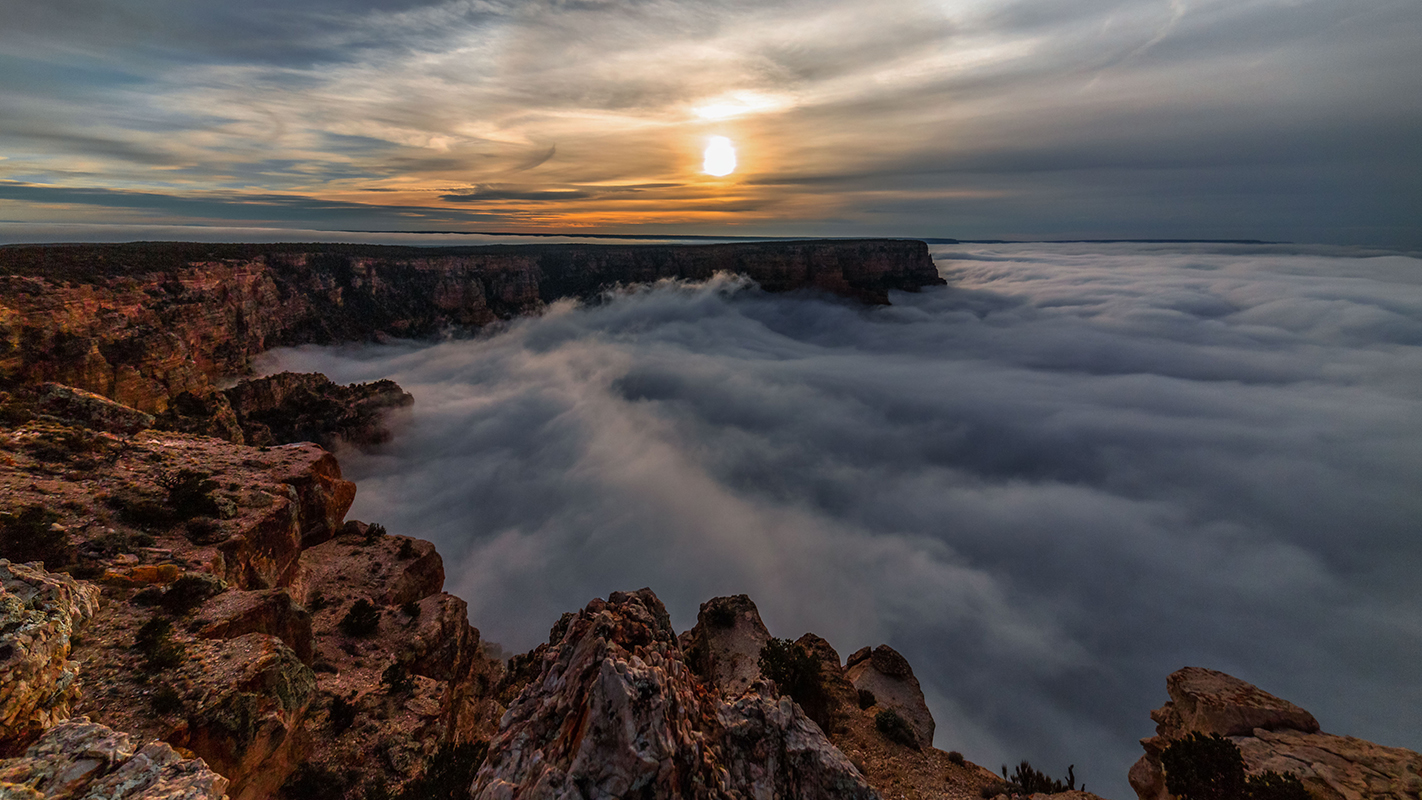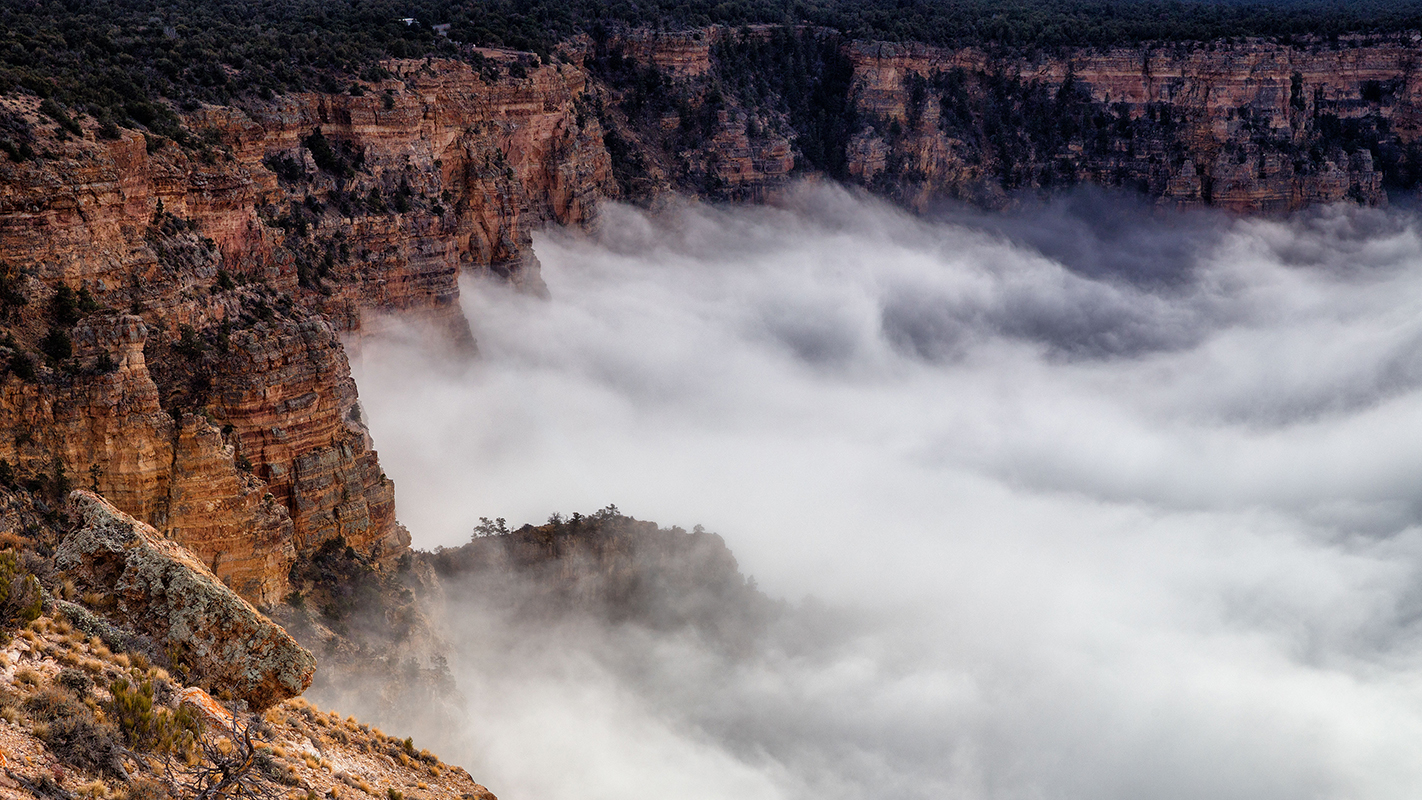A Cloud 'Tide' Fills the Grand Canyon in Gorgeous Time-Lapse Video

Time-lapse images recently captured an incredible sight — a "tide" of clouds rolling into Arizona's Grand Canyon, in a rare phenomenon known as a total cloud inversion.
Thick, white clouds roil and churn in footage that was shot and edited into a video by filmmaker Harun Mehmedinovic. Titled "Kaibab Elegy," the film was published on Vimeo on May 14 and is part of the Skyglow video series and book project, documenting the impact of light pollution on the visibility of the night sky, and contrasting bright urban landscapes with wild spaces untouched by the shine of electric illumination. [Image Gallery: See Photos of Wild Cloud Formations]
Air temperature typically cools as it moves higher into Earth's atmosphere. But during an inversion event, a layer of warm air traps cool air and moisture closer to the ground, preventing it from dissipating as it normally would, according to the National Weather Service (NWS).
The phenomenon, also called a surface inversion, is most likely to form during winter months when the air near the ground cools quickly at night, while the air just above the surface stays warm. If winds are calm, the warm air can't mix with the cooler air below it, and the cooler air — which is already denser than the warm air — persists close to the ground; that cool air is particularly likely to get stuck if there are also high-pressure conditions in the area or topographical features such as mountains that can trap the cool air, the NWS explained.
When an inversion happens at the Grand Canyon, dense clouds can take shape, rolling through the basin like ocean waves. Seen in Mehmedinovic's time-lapse footage, the fast-moving clouds are so thick that they obscure all but the very lip of the vast canyon, as the sun sets and the sky fills with brilliant colors.
Skyglowproject.com: 'Kaibab Elegy' from Harun Mehmedinovic on Vimeo.
The National Park Service (NPS) documented a similar episode at the Grand Canyon on Dec. 11, 2014, sharing it on YouTube; in its video, a minute of time-lapse footage captures about 15 minutes of clouds advancing up the canyon walls and then retreating.
Get the world’s most fascinating discoveries delivered straight to your inbox.
And that's a lot of space to fill — the Grand Canyon extends for 277 miles (433 kilometers) in length, is 10 miles (16 km) wide and has a depth of about 1 mile (1.6 km), according to the NPS.
But inversions don't just create dramatic cloud displays — in populated areas, they can also dramatically affect air quality by trapping pollution. When a "lid" of warm air covers a region, particularly in a valley, airborne pollutants from industry, traffic and furnaces can collect in a miasma of smog, the NWS explained.
Original article on Live Science.

Mindy Weisberger is a science journalist and author of "Rise of the Zombie Bugs: The Surprising Science of Parasitic Mind-Control" (Hopkins Press). She formerly edited for Scholastic and was a channel editor and senior writer for Live Science. She has reported on general science, covering climate change, paleontology, biology and space. Mindy studied film at Columbia University; prior to LS, she produced, wrote and directed media for the American Museum of Natural History in NYC. Her videos about dinosaurs, astrophysics, biodiversity and evolution appear in museums and science centers worldwide, earning awards such as the CINE Golden Eagle and the Communicator Award of Excellence. Her writing has also appeared in Scientific American, The Washington Post, How It Works Magazine and CNN.



